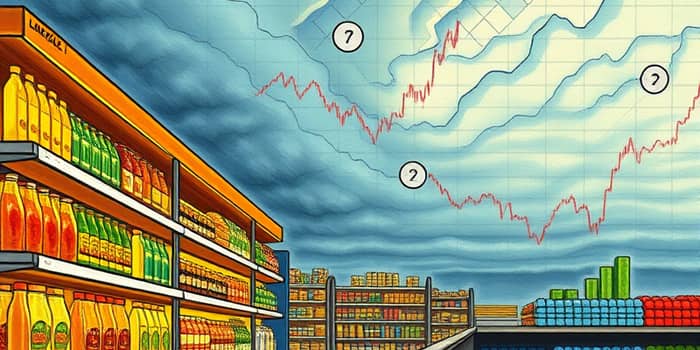
In a year marked by economic unease and market volatility, consumer staples have emerged as a beacon of stability. Investors and companies alike are turning to everyday essentials—food, household goods, and personal care items—to cushion the blow of falling confidence and price pressures. As 2025 unfolds, the sector’s resilience is not purely anecdotal; it is backed by performance data and evolving strategies that underscore the critical role staples play in uncertain times.
Amid growing concerns over inflation and geopolitical tensions, consumer confidence slid to its lowest level since late 2023. Yet, while discretionary sectors saw spending pull back, staples remained firm. Historically, these goods are deemed non‐negotiable purchases, allowing companies to maintain sales volumes even when wallets tighten.
In fact, the resilient consumer staples sector in 2025 has outperformed broader indices when volatility spiked. During steep market declines, the Vanguard Consumer Staples ETF gained more than 5%, while discretionary equivalents plunged nearly 7%. This defensive nature underscores essentials’ enduring appeal.
Lessons learned during the COVID-19 pandemic and prior tariff disputes have fortified supply chains and bolstered risk management. Companies now enter downturns with contingency plans that safeguard production and distribution, reinforcing their ability to weather shocks.
Early in 2025, consumer staples stood as the sole S&P 500 segment closing the quarter in positive territory. As the broader market wrestled with spiking inflation expectations and interest rate jitters, staples delivered consistent returns, driven by steady demand and pricing power and stable demand.
This data highlights staples’ outperformance relative to other sectors. With stable margins and the ability to pass costs onto consumers, these companies have turned uncertainty into an opportunity to reinforce brand loyalty.
Rising tariffs on imports, especially tariffs on imports from China, Canada, and Mexico, have inflated input costs. Top staples producers have navigated this by reshoring manufacturing and renegotiating supplier contracts, thus shielding margins.
A strengthened U.S. dollar poses currency risk for companies with significant overseas sales. To mitigate this, some firms are boosting domestic production and hedging strategies to manage foreign exchange volatility.
Meanwhile, consumer preferences are tilting toward store brands and regional players. Nearly half of global shoppers now prioritize locally owned companies, prompting staples firms to tailor portfolios to regional tastes and promote provenance in marketing campaigns.
Gone are the days when volume growth was the primary lever for success. Today, only 22% of executives cite volume increases as their top growth driver, down from 36% last year. Instead, 79% of leading performers emphasize focus on product mix and innovation to boost profitability.
Innovation initiatives span new flavor variants, premium ingredient recipes, and eco-friendly packaging. These efforts keep consumers engaged, even in value‐conscious markets. Speedier delivery options and enhanced e-commerce platforms further cement staples’ appeal for time-pressed shoppers.
Localization strategies include sourcing ingredients from nearby farms, shortening supply chains, and offering region-specific SKUs. These moves not only cut transportation costs but also resonate with consumers seeking authenticity and sustainability.
As real wage growth ticked upward, consumers remained cautious, trimming luxury purchases but ensuring essentials were secured. Walmart’s warnings of slowing bigger-basket sales reflect this shift in spending mix.
Value-focused shoppers are increasingly drawn to private-label staples that offer comparable quality at lower price points. Retailers and manufacturers have responded by elevating store brands, aligning them with premium offerings to capture broader market segments.
Shoppers also show heightened interest in product origin, driving staples firms to highlight local sourcing and transparent supply chains. This trend dovetails with environmental and social governance priorities, enhancing brand perception and loyalty.
Despite the optimistic narrative, risks remain. Further escalation of trade disputes could upend cost structures, while sustained dollar strength may erode overseas margins. Moreover, if inflation intensifies beyond consumer tolerance, even staples may face demand contraction.
Analysts caution against over-concentration in defensive sectors. Should central banks maintain restrictive policies to curb inflation, broader economic slowdowns could pressure even essential categories.
Looking ahead, consumer staples are well-positioned to deliver steady returns. Continued investment in innovation, localization, and digital channels will drive engagement and margin expansion. Companies that balance cost management with brand-building stand to thrive amid uncertain markets.
Investors seeking stability may view staples as a cornerstone of diversified portfolios, particularly if volatility persists. While no sector is immune to systemic shocks, the blend of necessity, pricing flexibility, and adaptive strategies makes consumer staples a compelling defensive choice as 2025 progresses.
References













